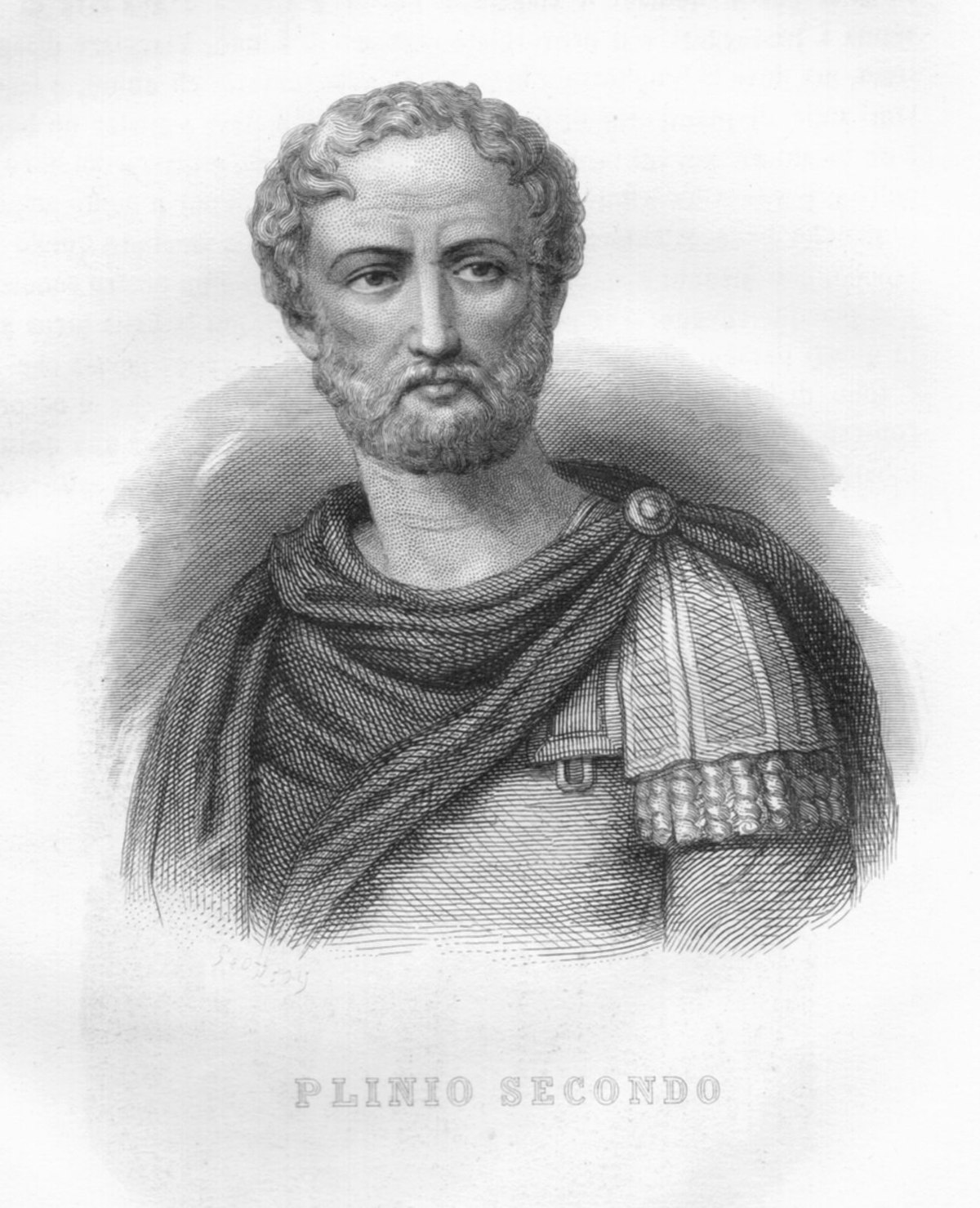Pliny was the son of an
equestrian Gaius Plinius Celer and his wife, Marcella. Neither the younger nor the elder Pliny mention the names. Their ultimate source is a fragmentary inscription (
CIL V 1 3442) found in a field in
Verona and recorded by the 16th-century
Augustinian friar
Onofrio Panvinio. The form is an
elegy. The most commonly accepted reconstruction is
PLINIVS SECVNDVS AVGV. LERI. PATRI. MATRI. MARCELLAE. TESTAMENTO FIERI IVSSO
Plinius Secundus augur ordered this to be made as a testament to his father [Ce]ler and his mother [Grania] Marcella
The actual words are fragmentary. The reading of the inscription depends on the reconstruction,
[5] but in all cases the names come through. Whether he was an
augur and whether she was named Grania Marcella are less certain.
[6] Jean Hardouin presents a statement from an unknown source that he claims was ancient, that Pliny was from Verona and that his parents were Celer and Marcella.
[7] Hardouin also cites the conterraneity (see below) of
Catullus.
[5]
How the inscription got to Verona is unknown, but it could have arrived by dispersal of property from Pliny the Younger's
estate at Colle Plinio, north of
Città di Castello, identified with certainty by his initials in the roof tiles. He kept statues of his ancestors there. Pliny the Elder was born at
Como, not at Verona: it is only as a native of old
Gallia Transpadana that he calls
Catullus of Verona his
conterraneus, or fellow-countryman, not his
municeps, or fellow-townsman.
[8][9] A statue of Pliny on the façade of the
Como Cathedral celebrates him as a native son. He had a sister, Plinia, who married into the Caecilii and was the mother of his nephew, Pliny the Younger, whose letters describe his work and study regimen in detail.
In one of his letters to Tacitus (
avunculus meus), Pliny the Younger details how his uncle's breakfasts would be light and simple (
levis et facilis) following the customs of our forefathers (
veterum more interdiu). Pliny the Younger wanted to convey that Pliny the Elder was a "good Roman", which means that he maintained the customs of the great Roman forefathers. This statement would have pleased Tacitus.
Two inscriptions identifying the hometown of Pliny the Younger as Como take precedence over the Verona theory. One (
CIL V 5262) commemorates the younger's career as the imperial magistrate and details his considerable charitable and municipal expenses on behalf of the people of Como. Another (CIL V 5667) identifies his father Lucius' village as present-day Fecchio (tribe Oufentina), a hamlet of
Cantù, near Como. Therefore, Plinia likely was a local girl and Pliny the Elder, her brother, was from Como.
[10]
Gaius was a member of the
Plinia gens: the
Insubric root
Plina still persists, with
rhotacism, in the local surname "Prina". He did not take his father's
cognomen, Celer, but assumed his own, Secundus. As his adopted son took the same cognomen, Pliny founded a branch, the Plinii Secundi. The family was prosperous; Pliny the Younger's combined inherited estates made him so wealthy that he could found a school and a library, endow a fund to feed the women and children of Como, and own multiple estates around
Rome and Lake Como, as well as enrich some of his friends as a personal favor. No earlier instances of the Plinii are known.
In 59 BC, only about 82 years before Pliny's birth,
Julius Caesar founded Novum Comum (reverting to Comum) as a
colonia to secure the region against the
Alpine tribes, whom he had been unable to defeat. He imported a population of 4,500 from other provinces to be placed in
Comasco and 500 aristocratic Greeks to found Novum Comum itself.
[11] The community was thus multi-ethnic and the Plinies could have come from anywhere. Whether any conclusions can be drawn from Pliny's preference for Greek words, or
Julius Pokorny's derivation of the name from north Italic as "bald"
[12] is a matter of speculative opinion. No record of any ethnic distinctions in Pliny's time is apparent—the population considered themselves to be Roman citizens.


